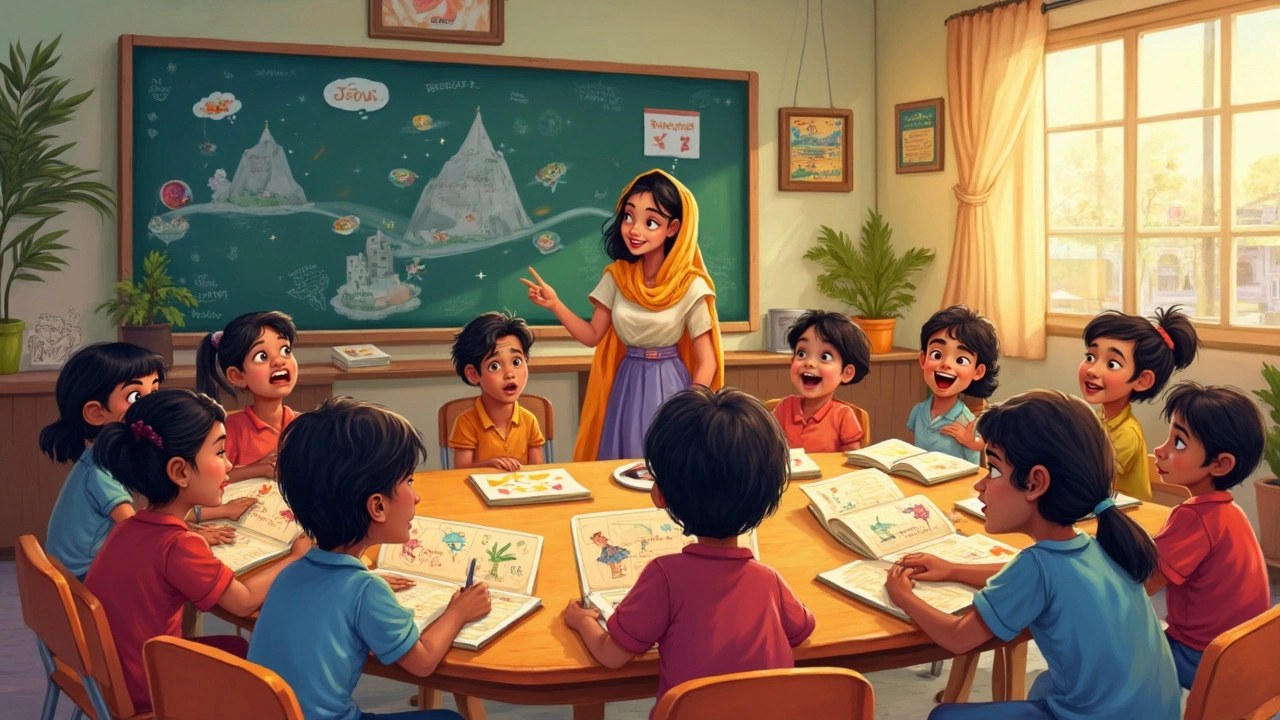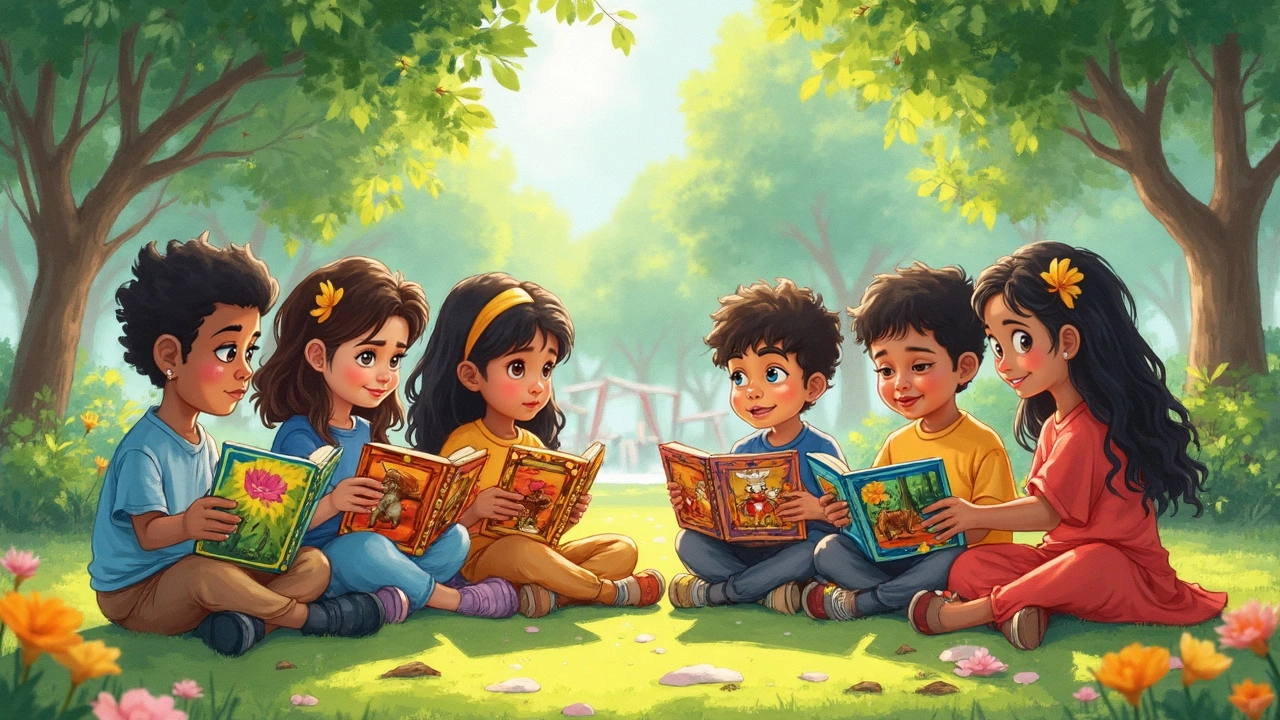Adventure Story Grade 3: What You Need to Know

Ever wonder what really counts as an adventure story for a grade 3 classroom? Think about books like "Magic Tree House" or "Nate the Great"—stories where something exciting happens and the hero has to solve a big problem or explore the unknown. Adventure stories at this age are all about action, curiosity, and a bit of bravery.
Kids don’t need wild dragons or trips to the moon. Sometimes, a backyard mystery or a lost pet is enough to get young readers hooked. The goal is to show main characters facing challenges, making choices, and usually, having a lot of fun along the way.
- What Makes an Adventure Story for Third Graders?
- Key Ingredients Every Adventure Needs
- Tips to Help Kids Write Their Own Adventure Story
- Fun Ideas to Spark Creative Adventures
What Makes an Adventure Story for Third Graders?
If you’re looking for a classic adventure story for a grade 3 reader, it usually has a kid-friendly problem, a dash of humor, and a main character who’s around the same age as the kids reading the book. Stories like “Flat Stanley” or anything in the “Magic Tree House” series pop up a lot in third grade classrooms for exactly this reason—they’re packed with exploration, action, and just enough danger to make things fun (but not scary).
In third grade, adventure stories don’t go overboard with complicated plots or tough language. They stick to short chapters and simple words. The main idea is to keep the story moving fast enough so kids won’t get bored, but clear enough so everyone can follow along. The plot almost always has a beginning where things are normal, a middle where the adventure kicks off, and an ending that wraps things up in a way that makes sense to young minds.
- Main characters are usually kids or friendly animals.
- The adventure often starts close to home—think school, park, or neighborhood.
- The characters have a problem or mystery to solve, maybe a secret clue, missing object, or hidden treasure.
- Most adventures have lots of action—chasing, escaping, or searching.
- There’s a clear lesson or positive message by the end.
| Good Examples | Theme |
|---|---|
| "The Boxcar Children" | Solving a mystery, teamwork |
| "Nate the Great" | Finding clues, solving problems |
| "Magic Tree House" | Time travel, exploration |
| "Geronimo Stilton" | Adventure, humor |
A good adventure story for this age grabs attention fast—no long introductions, just straight into the action. Writers don’t add in violence or anything too risky either. One study from Scholastic in 2024 found that adventure is still the most popular genre for third graders to read for fun, beating out fantasy and nonfiction. Bottom line: if the story has heart, action, and a character kids can root for, it ticks all the boxes for a grade 3 adventure.
Key Ingredients Every Adventure Needs
If you want a story to feel like a real adventure, there are a few things you just can’t skip. These ingredients make sure readers stay interested and want to keep turning the page. Let’s get into what actually matters in a adventure story for grade 3.
- Main Character: This is the person or kid readers will follow. Most of the time, third grade adventure stories stick to just one main hero—a regular child or even an animal works great.
- A Clear Goal or Problem: Every adventure kicks off with something the hero wants or needs to do. Maybe they want to find a lost treasure, help a friend, or solve a mystery. The goal needs to be something kids relate to or get excited about.
- Obstacles: No adventure is smooth sailing. There have to be problems or tricky situations that make things hard for the main character. In grade 3, this might mean getting lost, teaming up with new friends, or facing a silly but tough villain.
- Exciting Setting: The story works best if it happens somewhere that feels interesting—maybe a forest, a school after hours, or even a neighbor’s backyard. The place should add to the adventure, not just be there in the background.
- A Lesson or Change: Most great adventures end with the main character learning something, making a new friend, or seeing the world in a new way. That feeling of growth or victory matters more than just "winning" the battle.
Teachers look for stories with a clear beginning, middle, and end. Here’s a quick breakdown of common story parts and how often they show up in popular grade 3 adventure books:
| Story Part | Percentage in Popular Books |
|---|---|
| Main Character Faces a Big Problem | 98% |
| Exciting or Unique Setting | 92% |
| Funny or Unusual Sidekick | 65% |
| Lesson Learned at the End | 83% |
| Clues or Mysteries to Solve | 76% |
If you cover these basics, you’ve already got a strong start. Plus, using clear and simple language helps third graders stay hooked. Keeping stories to just a few characters and one main problem also makes things easier to follow for early readers.

Tips to Help Kids Write Their Own Adventure Story
If you want a third grader to write a really fun adventure story, start with the basics: a hero, a challenge, and an exciting journey. Most eight- and nine-year-olds get stuck if they don’t have a simple plan. Here’s what actually helps them get their ideas flowing and build a solid story structure.
- Start with a Relatable Main Character: Kids should pick someone they can imagine—maybe a kid like themselves or even a pet.
- Give That Character a Clear Goal: It can be as simple as finding a treasure, rescuing a friend, or exploring a new place.
- Throw in Some Trouble: Every good adventure needs problems—lost maps, missing clues, or a funny twist. Ask: what could go wrong?
- Let Things Build Up: Help kids make it tougher before the happy ending. More hurdles make the victory sweeter.
- Wrap It Up Clearly: Remind kids to show what changes at the end. Did the hero learn something? Did they find the treasure?
Sometimes, having a simple structure makes a big difference. Teachers often use the “Somebody-Wanted-But-So-Then” method:
- Somebody (Who is the main character?)
- Wanted (What does the character want?)
- But (What went wrong?)
- So (How do they try to fix it?)
- Then (What’s the ending?)
Let’s look at what helps third graders feel confident writing adventure stories. Surveys from U.S. elementary classrooms say that using story outlines and talking about favorite books make kids 60% more likely to finish their own stories.
| Tip for Writing | Boosts Story Success (%) |
|---|---|
| Using Picture Prompts | 72 |
| Story Outlines | 60 |
| Peer Sharing | 54 |
| Teacher Feedback | 81 |
If you’re working with a third grader, encourage them to read their story out loud. When they hear it, it’s easier to spot missing details or things that don’t make sense. And honestly, no one’s first draft is perfect. Remind them: real authors revise their stories a bunch of times too.
Last tip—let kids add drawings or make a comic out of their story. For some, pictures spark new ideas and details, helping them create scenes and twists they wouldn’t think of with words alone.
Fun Ideas to Spark Creative Adventures
Sometimes third graders hit a wall and can’t think up ideas for their adventure story. The trick is to play around with everyday stuff and see what tiny changes could lead to big excitement. Even the simplest idea can feel brand new with the right twist.
- Imagine something strange happening on a normal school day, like the lunchboxes switching places or the class hamster escaping. It’s easy for kids to relate to school, and just one surprise can set off a wild chase or mystery.
- Take a well-known setting, like the park or the grocery store, and throw in a challenge. Maybe a favorite toy goes missing during a picnic. That’s the spark for an adventure that feels personal.
- Look around at hobbies and games. Sports, video games, or even building with blocks can turn into stories. For example, a soccer match becomes a quest to find a missing ball that rolled into a hidden part of the playground.
- Mash up animals and imagination. Kids love stories with dogs, cats, or talking squirrels. What if their pet suddenly started talking or led them on a secret mission?
If you want some stats, here’s a quick look at what topics grade 3 students say they like most for adventure stories:
| Adventure Topic | Percent of Students Interested |
|---|---|
| Animal Adventures | 58% |
| Lost and Found Mysteries | 42% |
| Superhero Quests | 37% |
| Exploring New Places | 45% |
To help kids come up with even more ideas for their adventure story, try these starter prompts:
- "You open your backpack and find a map you’ve never seen before. Where does it lead?"
- "Your best friend’s new puppy disappears right before your eyes. What do you do?"
- "You’re at the library when you hear a strange noise coming from behind the bookshelves. What’s there?"
- "During recess, you find a key buried in the sandbox. What does it unlock?"
Encouraging questions like these gets kids thinking about what could happen next, which is the heart of any adventure. Think small, think silly, but most of all, get started—the biggest thing is not being afraid to try out wild ideas and see where the story goes.
